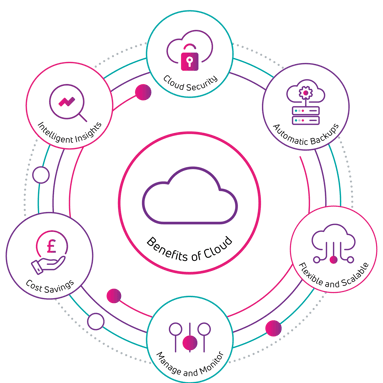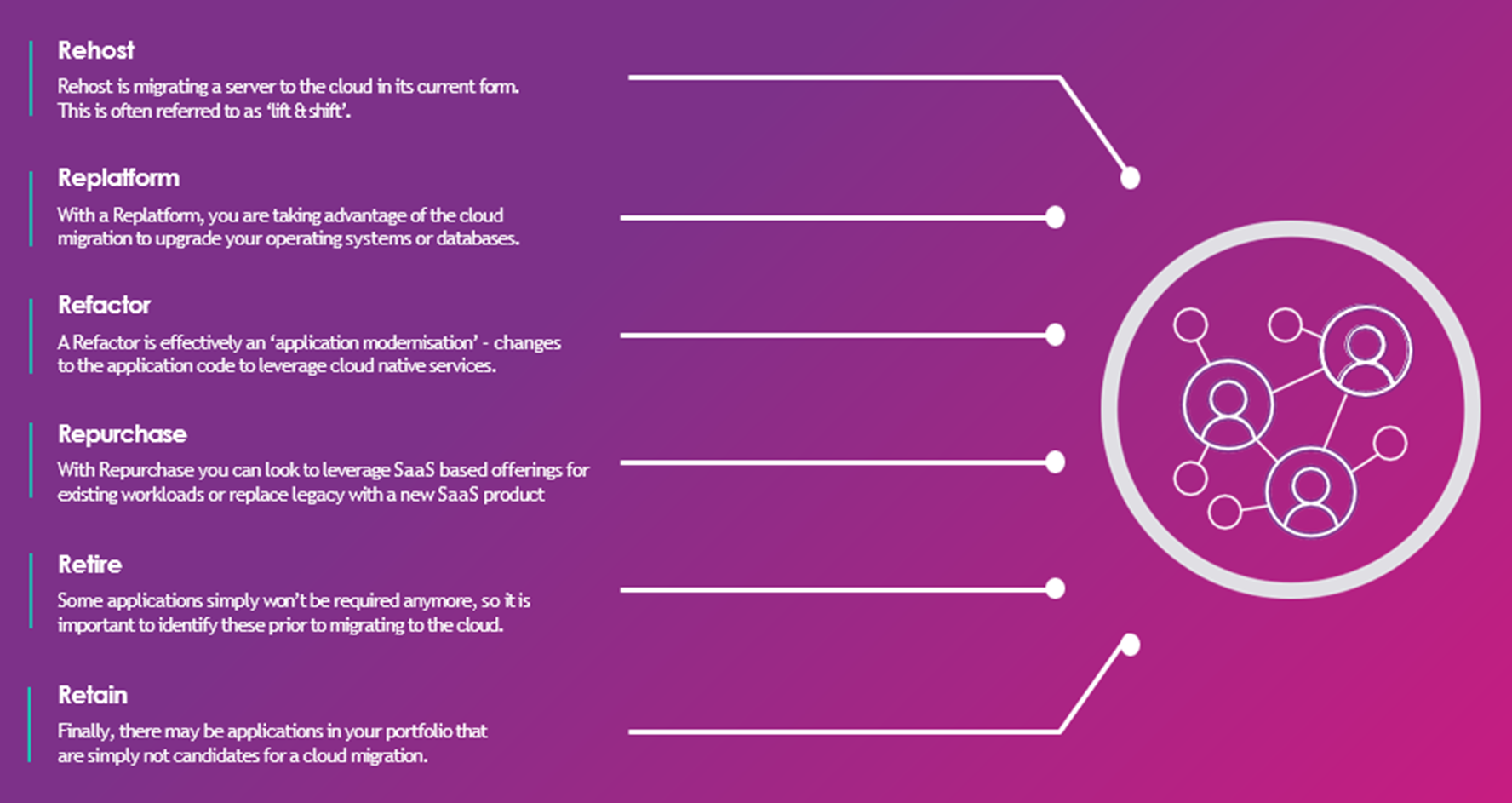At CAE, we know first-hand the benefits of cloud solutions, both for ourselves and our customers.

We believe there are many reasons to migrate your organisation’s applications to the cloud, including cost savings, streamlined operations as well and scale and flexibility, plus redeployment of resources and talent retention.
In this article, we answer some of the most common questions we get asked about moving applications to the cloud, so you can make an informed decision about whether it’s the right thing for your organisation.
1. Is it secure and where is my data?
“Is it secure?” is one of the most asked questions about the cloud. But as the cloud has become universal in organisations, the nature of the question has changed.
Every year, major cloud providers like Amazon and Microsoft spend billions to make their cloud services stable, robust and secure. Security measures and compliance certifications are available for all to see, and Microsoft’s cloud offering is considered top tier in terms of compliance, governance, and physical security.
The result? Today, almost everyone accepts that the cloud is secure. The conversation now is less about how secure it is and more about how to ensure you are using the features available and how to control data. It’s essential that organisations understand where their data lives, where it may go and who can access it to feel comfortable with moving to the cloud.
A lack of understanding of how the cloud works is often a barrier to adoption for many organisations. In the UK, law firms are amongst some of the most cautious adopters of cloud solutions, primarily because of questions about where confidential client data will reside and who can access it.
There needs to be an understanding that, by its very nature, the cloud exists in multiple locations – and your data can too. Azure, for example, can have multiple copies of data in multiple locations giving you the resilience you need and expect, however Microsoft do provide the ability to specify which geographical region your resources are tied to for most services.
This conversation isn’t always an IT-led discussion; the business in question needs to decide which country their data should reside in and whether they are comfortable with it potentially leaving UK soil. Though Azure has multiple locations in the UK alone, the cloud gives customers choices here, with different services, having different options about where data is stored, but it’s important that well-informed decisions are made in this regard.
Organisations need to know what they are letting themselves in for and understand how data will be stored and accessed, which needs a complex, but not impossible, discussion about trust and understanding. In our experience, truly understanding the options and how the cloud works has given confidence to customers in making an informed decision based on facts, not fear.
2. What happens to the day-to-day tasks of my IT team?
Generally, moving to the cloud removes the need to support some operational elements. There isn’t a direct correlation between adopting cloud services and IT staff suddenly being at a loose end! We prefer to see this as freeing up IT staff to focus on more strategic tasks.
Whether they’re in retail, manufacturing, healthcare or any other sector, businesses are trying to be ‘the best’ and provide the greatest service to their customers that they can. IT should enable them to do that. It should be a supporter and enabler for a business to do its job and operate at its highest level. And for organisations that are held back by inefficient, outdated IT systems, embracing the cloud is one way to make improvements.
Many organisations today are questioning their use of physical server and storage-based environments; they are costly, require office space and need people to maintain and manage them. The need for physical infrastructure has changed as the cloud broadens its suitability for more workloads. Solutions like O365 and Exchange Online are making delivery of common IT services easier, better, and lower cost and Azure provides the same options as traditional virtual estates plus more. As IT evolves, such as organisations adopting a hybrid cloud approach, the complexity and skill set of IT teams needs to evolve with it, or face being left behind.
3. Why should I move away from on-premises solutions?
For most, the time has come to move away, at least in-part, from the classic major upgrade cycle with primarily on-premises systems. The problems associated with these upgrade cycles are a large factor in why some legacy systems are allowed to go stale and not keep pace with business requirements. There can be big security implications with this dated format of upgrades as well, and the most recent software versions are usually more secure overall.
Traditional Exchange Server and the move to Exchange Online or leveraging SQL PAAS services rather than SQL servers and clusters are perfect examples of the cloud enabling organisations to be ‘always current’ and move away from the classic 3-4-year major upgrade cycle with on-premises systems. The problems associated with these upgrade cycles is a large factor in why some legacy systems are allowed to go stale and not keep pace with business requirements or become less secure.
Moving from an on-premises workload to a SAAS platform can also help increase the mobility of your users and remove the need for VPNs or other secure routes of centralised connectivity. We have seen a rapid acceleration in the need to provide services to end users wherever they are and the cloud certainly helps facilitate this with much more flexibility than traditional systems.
When it comes to delivering improved productivity and user experience, cloud migration also has the potential to assist an organisation to attract and retain talent. It is important for organisations to consider early the development of additional skills for their staff on their cloud journey. Employees are an organisation’s most valuable and expensive asset. Finding talent is expensive, and not all acquisitions work out. Give your people rubbish IT or fail to keep up with the pace of change, and they’ll quickly become frustrated. Giving your teams the tools to do their jobs effectively – whether cloud or otherwise – means they’ll be the best versions of themselves and deliver More Good Days for your customers.
4. Scalability: how does the cloud allow businesses to scale up or down as needed?
There’s no doubt that the cloud gives businesses options that they didn’t have before. When utilising the cloud, businesses can be agile in their working and enable the optimisations of workload/application delivery. For instance, you can use containers and serverless architectures without the need to build complicated management structures underneath them. This enables you to quickly leverage automation and support an elasticity of services for better cloud economics.
At its simplest, let’s take the example of a start-up. The cloud lets you turn on business systems such as Microsoft 365 for five users and pay for the service they’re using: that’s it. No upfront hardware investment, no storage, air-conditioning or big upfront licence costs, and reduced reliance on IT teams to look after the service. Agile companies that are scaling quickly can leverage the cloud to populate the business as fast as they want and only pay for what they use – even if that’s 100 staff one week and 10 the next. The cost can rise and falls with headcount, giving the flexibility that simply didn’t exist before.
And with the focus on security, you can deploy high-end security solutions without the large-scale infrastructure or complexity that you had to before. The cloud allows your data and your users to be secure without the extra hassle.
5. Will I need to reconfigure or rebuild as part of a move to the cloud?
The cloud is fundamentally built on different principles, with different options and features available. Refactoring or designing a workload to be more cloud-native obviously unlocks a lot of the potential, but there is nothing wrong with hosting your virtual machines on the cloud and gaining the resilience and scale it has to offer. Microsoft also supports some older operating system versions in Azure for longer, presenting an opportunity to extend the cell-by-date by rehosting legacy workloads in the cloud.
Sometimes making the decision to make a change is the easy part, leaving the actual change to be more complicated. To help with this, we've talked about the three steps to ensuring a successful change project that can help you with your move.
Understanding and planning are key to success. The cloud offers flexible capabilities in how you can migrate and host workloads. CAE use a 6 R's methodology to help build a migration strategy, this is critical to help design a roadmap. Ensuring ‘right workload in the right place’ and consume the best services that work for your organisation.
6 R's Methodology

6. Which applications should I move to the cloud?
Again, there is no substitute for understanding and planning and there is not always a right or wrong answer when it comes to deciding which applications to move to the cloud; this will be unique to each organisation. But when assessing and evaluating your applications, you might find some lend themselves to being delivered via the cloud more than others.
Some traditional systems and applications are expensive at the time of purchase and continue to be expensive to manage and keep up to date. Microsoft Exchange is a good example; Exchange Online is cheaper and easier to run generally, so for most, it makes sense to leverage cloud scale and functionality that would be difficult and expensive to create in-house.
With SaaS (Software as a Service); if there’s a cloud-based SaaS solution that is like-for-like for what you have on-premises, it makes sense to move and take the hassle of maintaining the backend away, and we increasingly we see customers' taking a SaaS first strategy.
Then there are PaaS (Platform as a Service) offerings such as SQL services and Azure files, which give you the flexibility and configurability of traditional versions without the resilience or maintenance overheads but delivers superior scalability and agility.
Even if you have a heavily customised or custom-built solution and there isn’t a SaaS or PaaS solution available, you can lift and shift your own. While this is the simplest and easiest way, organisations should remember that moving existing applications to the cloud often means moving the inherent challenges of the original application, too.
A staged approach is normally key here, with some initial gains to be had in some areas and some longer terms thought needed. Phasing your journey will help with confidence as well as developing new skills for your teams and aligning your operating models to cloud which are also essential for successful outcomes.
Every organisation can almost certainly gain an advantage by leveraging cloud services, but that’s not to say that every system or application is necessarily right for the cloud.
If you're considering a move to the cloud, why not speak to one of our experts? Take the holistic approach to reinvigorate your company's use of its systems. Get guidance on what can and should or could be moved over to the cloud and understand the risks versus rewards for it. It's important to remember to choose which apps to move to the cloud on a bespoke, case-by-case basis, not an all-at-once approach.



